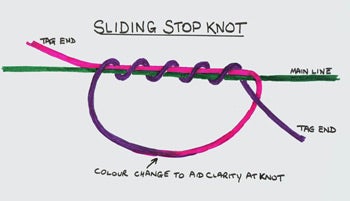|
Sometimes you will come across a very deep swim, well over 13 feet deep let’s say, in a reservoir or deep gravel pit and to make matters worse it’s a decent cast out to it. You could always reach for a Polaris-type float and float-ledger, but then you have a reasonably heavy weight pinned to the bottom. The Polaris is a good float to use, but it isn’t always the answer. Suppose your fish are taking baits just off the bottom, but the depth is actually 15 feet. That’s 14+ feet between the float and the hook and your rod is only 13 feet long. It’s almost impossible to cast with that setup and even with a 15 foot rod it would be extremely difficult, unless you use – a sliding float. I was faced with this same situation back in the 60s at Coombes Reservoir fishing off the dam wall and the rod I had then was only 12 feet long. Thankfully, during one of my trips to my sisters’, we went to Billing Aquadrome near Northampton one day and I met the great Billy Lane whilst he was practice fishing. I mentioned the problem to him and he suggested I buy some of his slider floats from the local tackle shop (forever the salesman!) They had to be ordered, but eventually I got hold of some and enjoyed some great fishing after that. Well, since then I’ve lost them all and they’re no longer made, but I still have some similar that do the job and the method of setting them up is still the same. The float and the rig You will need a long fairly heavy-bodied waggler, but one with a very fine eye at the bottom through which you thread the line. These are a lot smaller eye than you would normally find so look at the description on the float and it may say “Slider Antenna” or similar.   First, just feed the line, perhaps 3 or 4 pound b/s, through the very fine eye and form a small loop in the end of the line. To this attach your desired hook length, loop to loop. Fix a dust shot, 8s or less, about 3-4inches from the hook (or wherever suits you). Twelve inches up from that, on the main line perhaps, fix a no 6 shot and twelve inches further up from that fix a number 4s. Now, about 18-24 inches above that fix the bulk shot, everything else required to set the float to the correct depth. Do note please, if the float states it takes 3 SSG shot, place on instead 6AAA or even 12BB shot as these will be easier to correct for accurate shotting. Slightly above the float, use a piece of scrap line roughly the same diameter as the main line and tie on a sliding stop knot. Clip the ends of the knots leaving at least 1″ on the tags so that the knot can pass more easily through the rod rings.   Now balance out the float in the water, which should be about 5 feet deep to allow all the shot to take effect. Once you’re happy with the shotting, slide the stop knot to the desired position 14 or so feet (or wherever you want it) from the hook. When you cast the float will sit on the bulk shot with the stop knot through the eyes of the rod, possibly on the reel itself, and you can get a nice length of line ready for the cast. Once you have cast you can sink the line in the usual way, but once in position allow a couple of feet more to drift off the spool to allow for the greater depth. Striking is as normal, no harder. **Harrison’s Owner Hooks Competition Contender** | ||
|
Welcome!Log into your account










